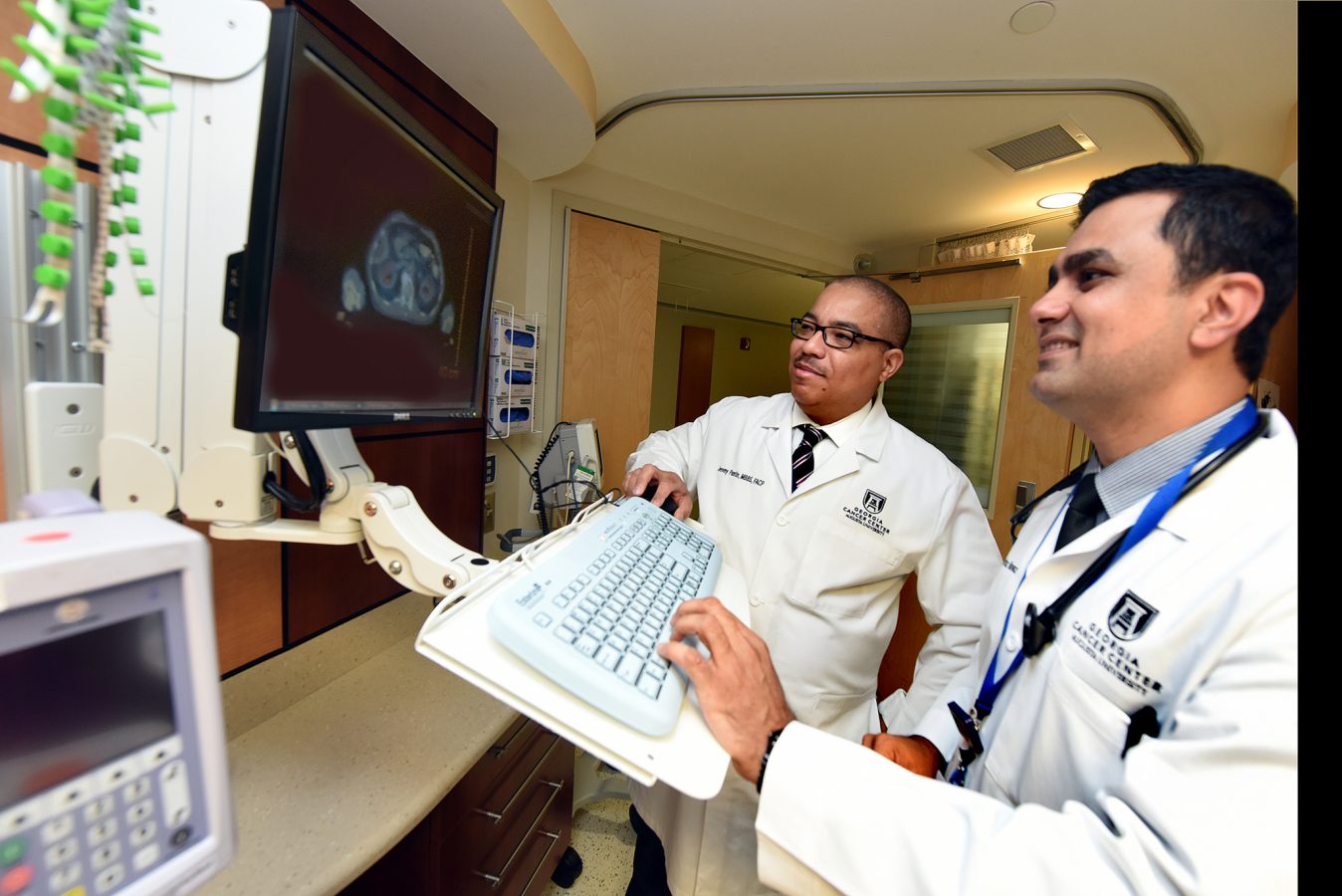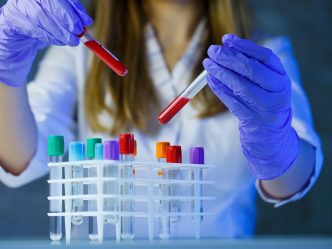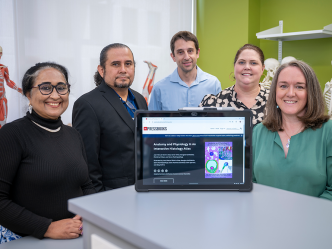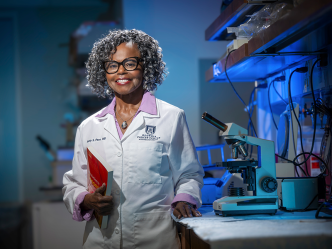The Medical College of Georgia and Augusta University Health have joined the first large national clinical trial to determine if bone marrow transplantation should be part of the standard of care for patients with sickle cell disease.
The National Institutes of Health-funded study will enable a bone marrow transplant for participants with severe disease that puts them at risk for premature death, if they have an appropriate bone marrow donor, most likely a sibling. When a donor cannot be identified, participants will be followed for two years with the current standard of care to see which group fares best.
About 20 sites including MCG are actively enrolling patients ages 15 to 40, and the Augusta site will enroll as many patients as possible.
MCG, an established Sickle Cell Center led by Dr. Abdullah Kutlar, currently follows about 1,500 patients.
“We want to be able to offer the option of cure to our patients who struggle the most with this chronic disease,” says Dr. Jeremy Mark A. Pantin, hematologist/oncologist in the MCG Department of Medicine. “You want to take away patients’ suffering and help them have a longer and healthier life.”
Pantin is a principal investigator on the phase 11 trial developed by Dr. Lakshmanan Krishnamurti, director of bone marrow transplant and chair of blood and marrow transplant at Children’s Healthcare of Atlanta of Emory University.
The bone marrow of these patients produces short-lived, red blood cells that don’t carry oxygen well, then take on an odd, sickle shape when they release the oxygen they do carry. The rigid, oddly shaped cells bang into blood vessel walls, injuring them, then pile up and further block blood flow. The hallmark pain crises – in which the body is essentially crying out for blood and oxygen – can lead to frequent hospitalizations. The compromised blood flow injures and destroys major organs and bones.
“These are people who are particularly thwarted by the side effects of their disease,” Pantin says. To be eligible they must have experienced at least one of its most serious consequences. These include a stroke; at least two episodes of acute chest syndrome – where sickle-shaped cells obstruct blood flow in the lungs – in the previous two years; or three or more pain crises per year in the previous two years that required medical attention. Exclusionary criteria include a history of substance abuse, pregnancy or breastfeeding and uncontrolled infection in the six weeks before enrollment.
The study requires a careful selection of patients that balances the health risks from their disease with the risks of the procedure such as graft versus host disease, a major cause of death in the first year after transplant when the newly acquired immune system attacks the patient’s organs and tissues, Pantin says.
However, a transplant can also effectively cure a disease that can result in regular hospitalization, an increasing reliance on powerful pain medication, an increased stroke risk, particularly for children, and an average life expectancy in the mid-40s.
“Selection is critical,” Pantin says. “You have to balance the patients’ complications through the course of their illness and the reality that patients generally have a reduced life expectancy, with the promise of being cured of the disease but not without some risk,” he says.
While this study is in sicker patients, if the large, side-by-side comparison yields the same results as smaller studies, Pantin suspects it will be a standard offered to all patients with a suitable donor. Previous research indicates that the transplants tend to work best in children, who have less-developed immune systems. However, the researchers believe that with careful selection, adults also will benefit.
For the transplant, the patients’ own bone marrow – which produces the red blood cells that carry oxygen, white blood cells critical to an immune response and platelets that enable clotting – is first wiped out with chemotherapy. It’s replaced with donor marrow given intravenously and patients spend at least the first two weeks in the sterile confines of the Augusta University Medical Center Bone Marrow Transplant Unit, while new white cells populate and re-establish immune protection.
They’ll take immunosuppressive drugs to reduce the risk of graft versus host disease for about six months. By then the new immune system should be trained to recognize the patient’s body and not attack, Pantin says. He notes that children typically make this transition more easily than adults.
“Once your body heals and your new immune system settles in, you taper off the high-intensity immunosuppressants and often quit taking them entirely,” Pantin says. Participants will be followed for two years to see what percentage remain disease-free and key factors will be monitored, such as how quickly new red and white blood cells and platelets appear.
Pantin cites a hormone inside the bone marrow that survives the ablation process and serves as a beacon for the new marrow to find its way inside the bone from the bloodstream. Pantin, a staff clinician and researcher at the Hematology Branch of the NIH’s National Heart, Lung and Blood Institute before coming to MCG in 2012, has shown in an animal model that graft versus host disease risk can be reduced by injecting the new bone marrow directly into the bone. Pantin plans to pursue a clinical trial using that approach as well, but it will require a trip to the operating room for recipients.
A sibling with an identical tissue match is the preferred transplant donor but well-matched, unrelated donors identified through the National Bone Marrow Donor Program also will be evaluated. Siblings tend to be the first donor choice for any type of transplant since they have a 1-in-4 chance of having identical human leukocyte antigen, proteins on immune cells that determine what the immune system recognizes as foreign.
MCG has long led innovations in the treatment of sickle cell disease, including serving as a study site for clinical trials of hydroxyurea, a drug that increases levels of fetal hemoglobin, which cannot sickle. MCG investigators also identified a painless, noninvasive method to identify children with sickle cell who were at risk for stroke, then found that regular blood transfusions could dramatically reduce that risk, an approach that is now considered standard practice.
Sickle cell disease is an inherited chronic condition affecting about 70,000 people in the United States and about 1,000 newborns each year, according to the Sickle Cell Disease Association of America, Inc. It is most common in individuals of African and Mediterranean descent.
For more information about the study, contact Leigh Wells or Latanya Bowman at 706-721-2171.
 Augusta University
Augusta University




